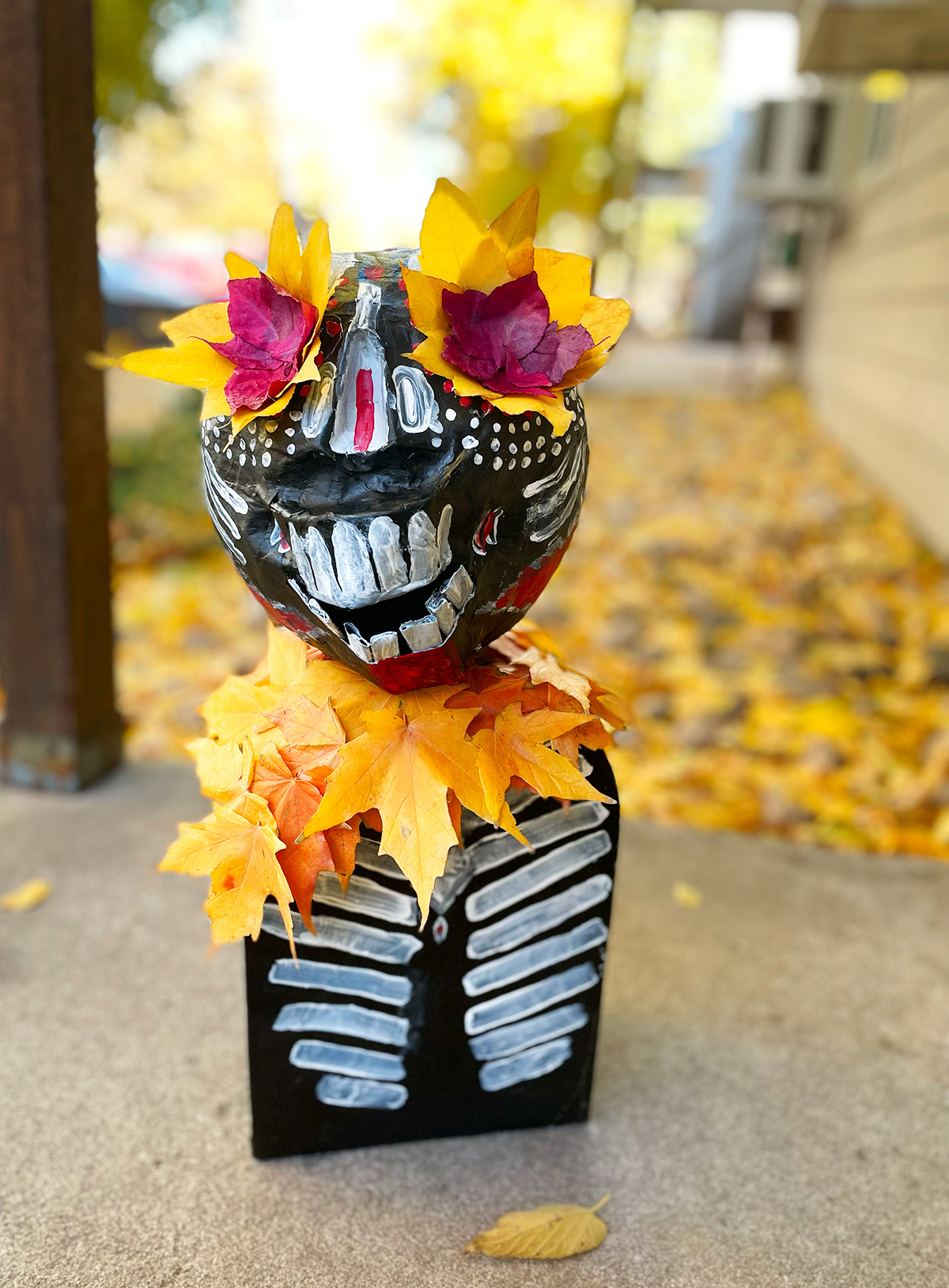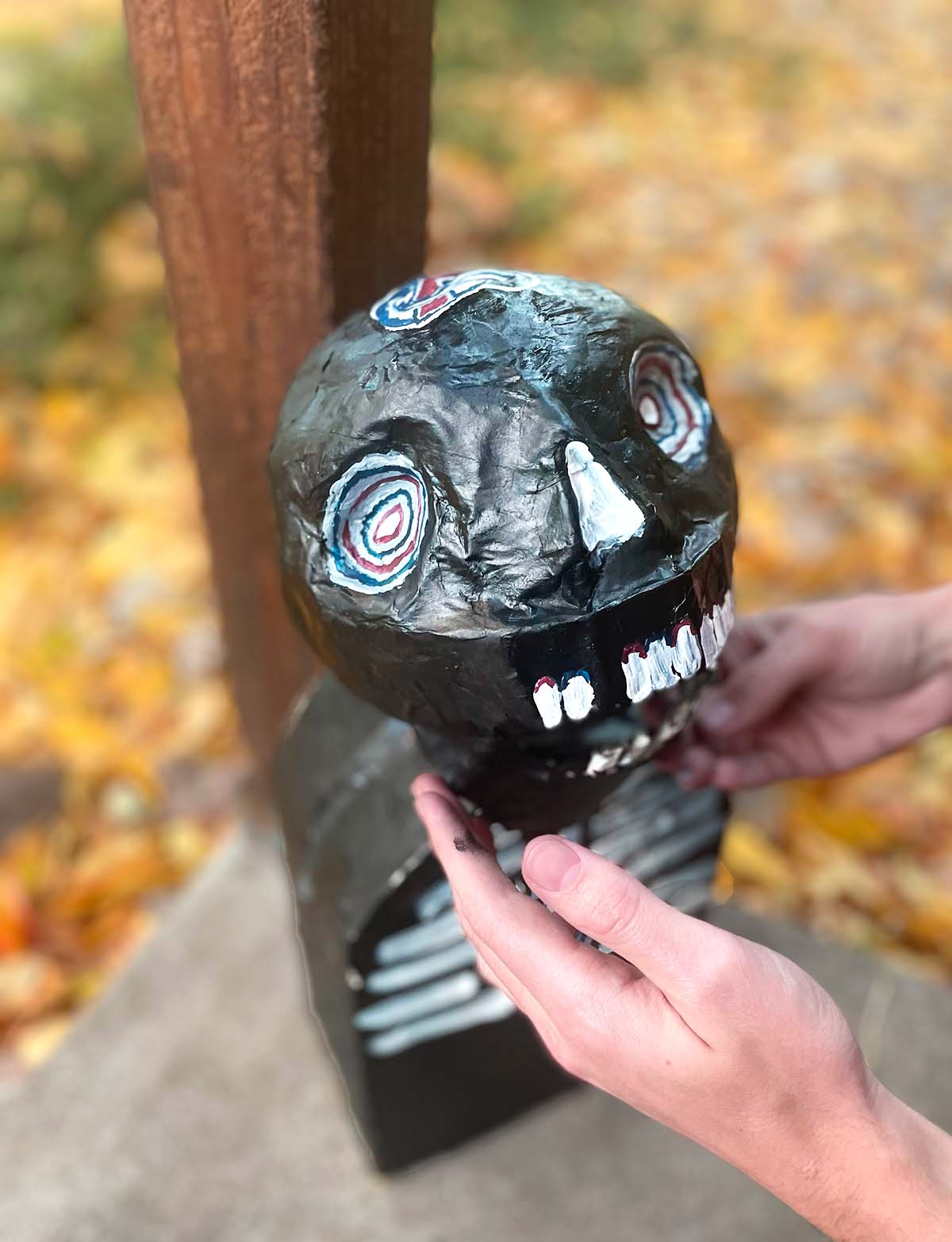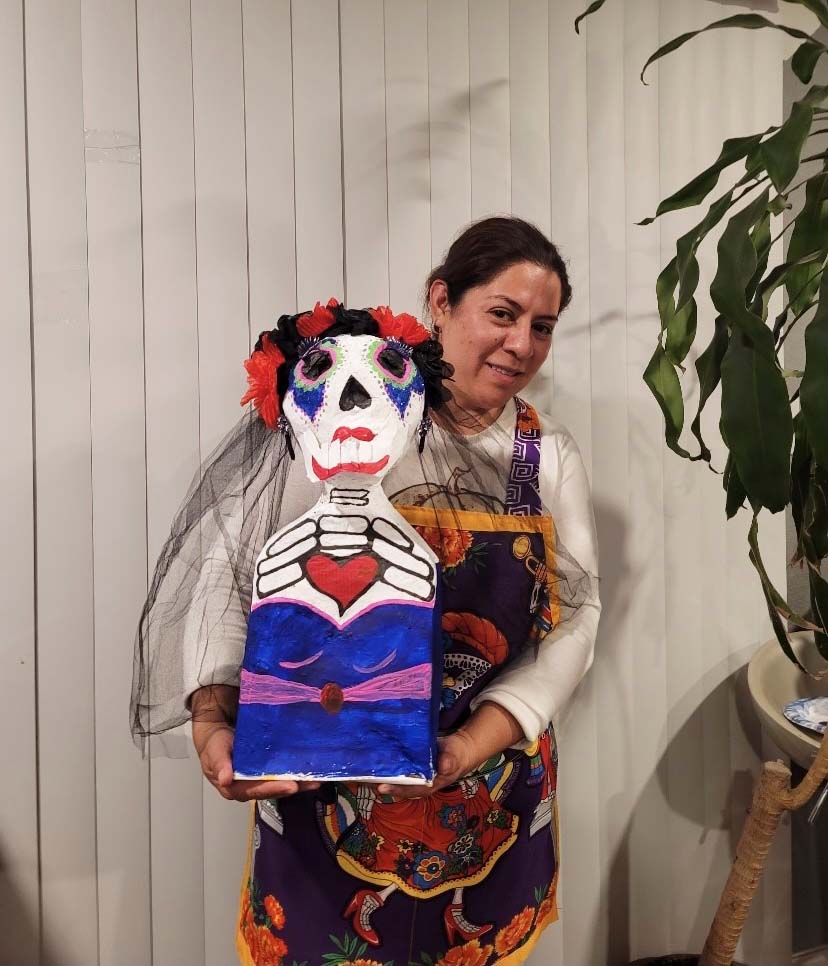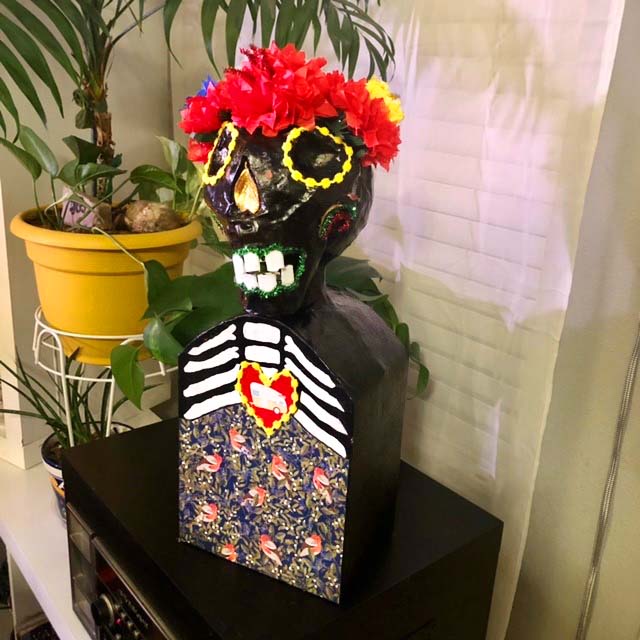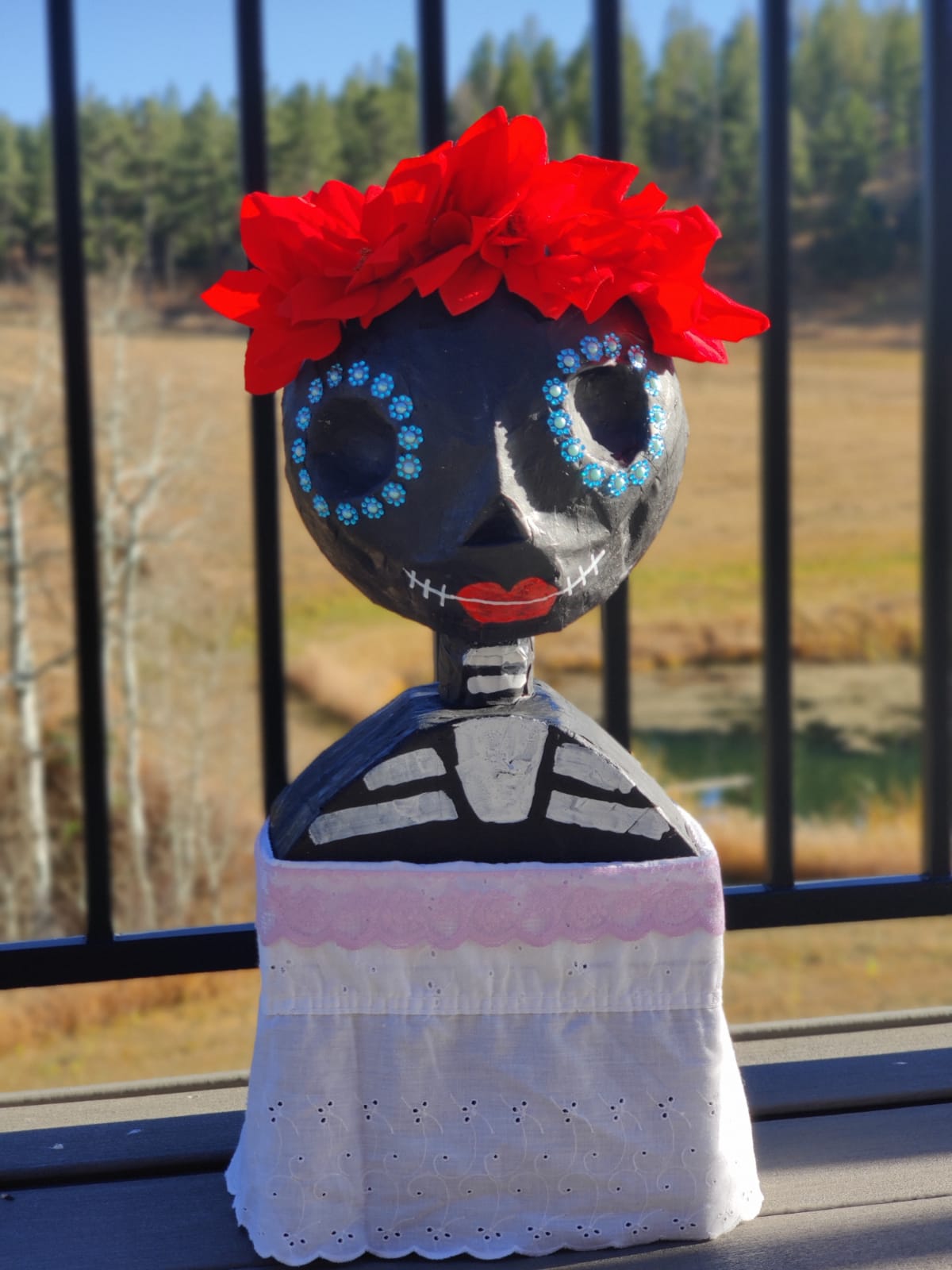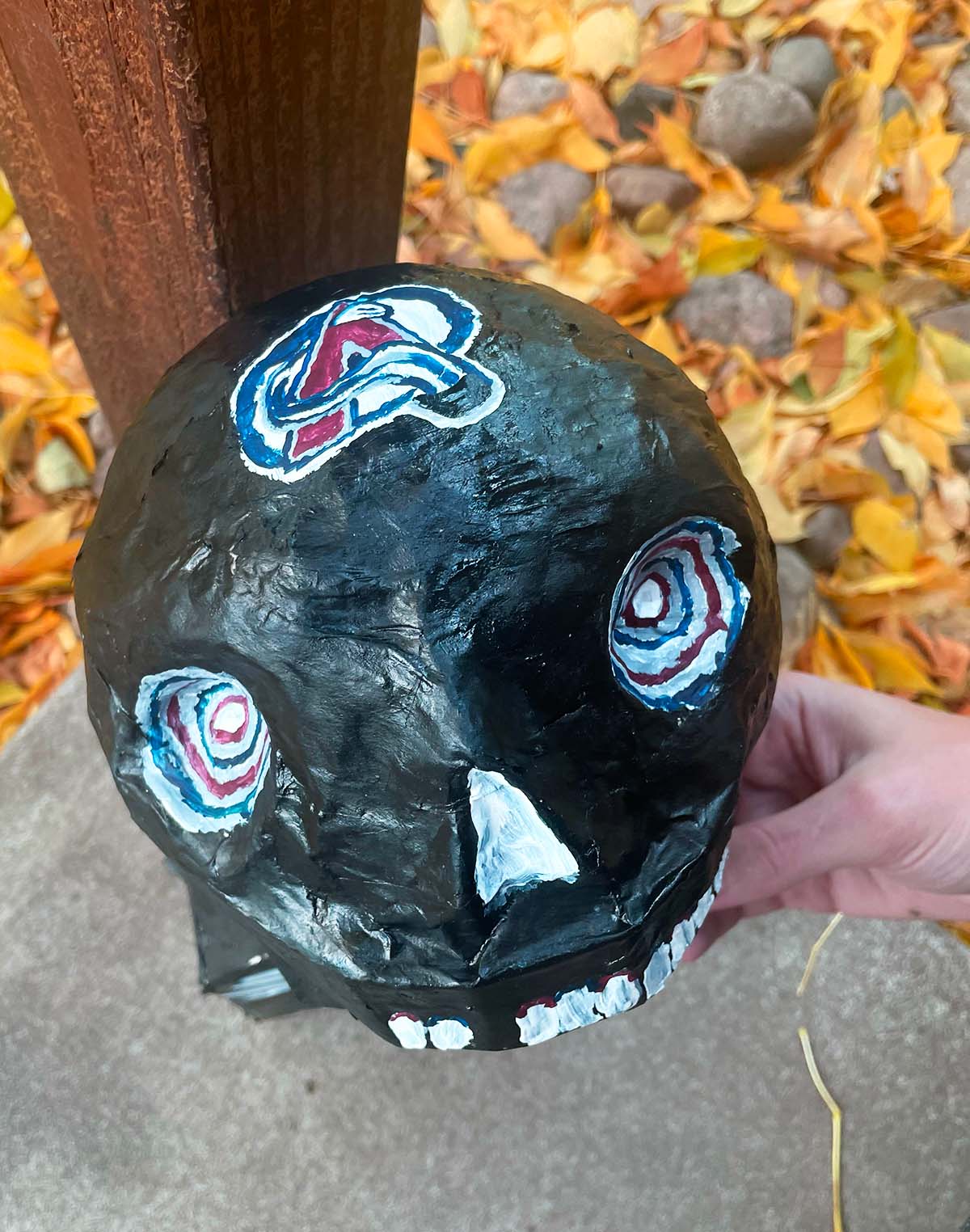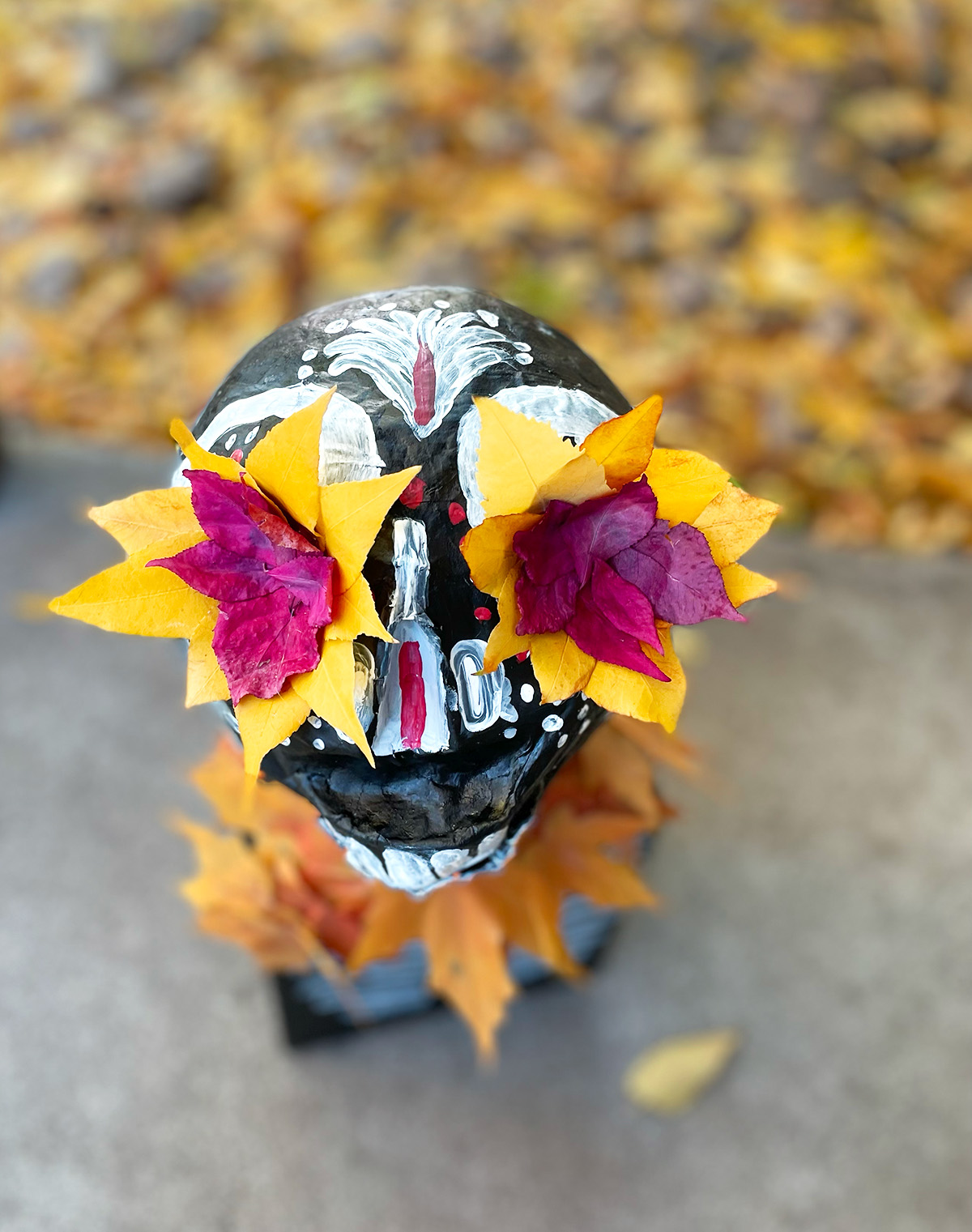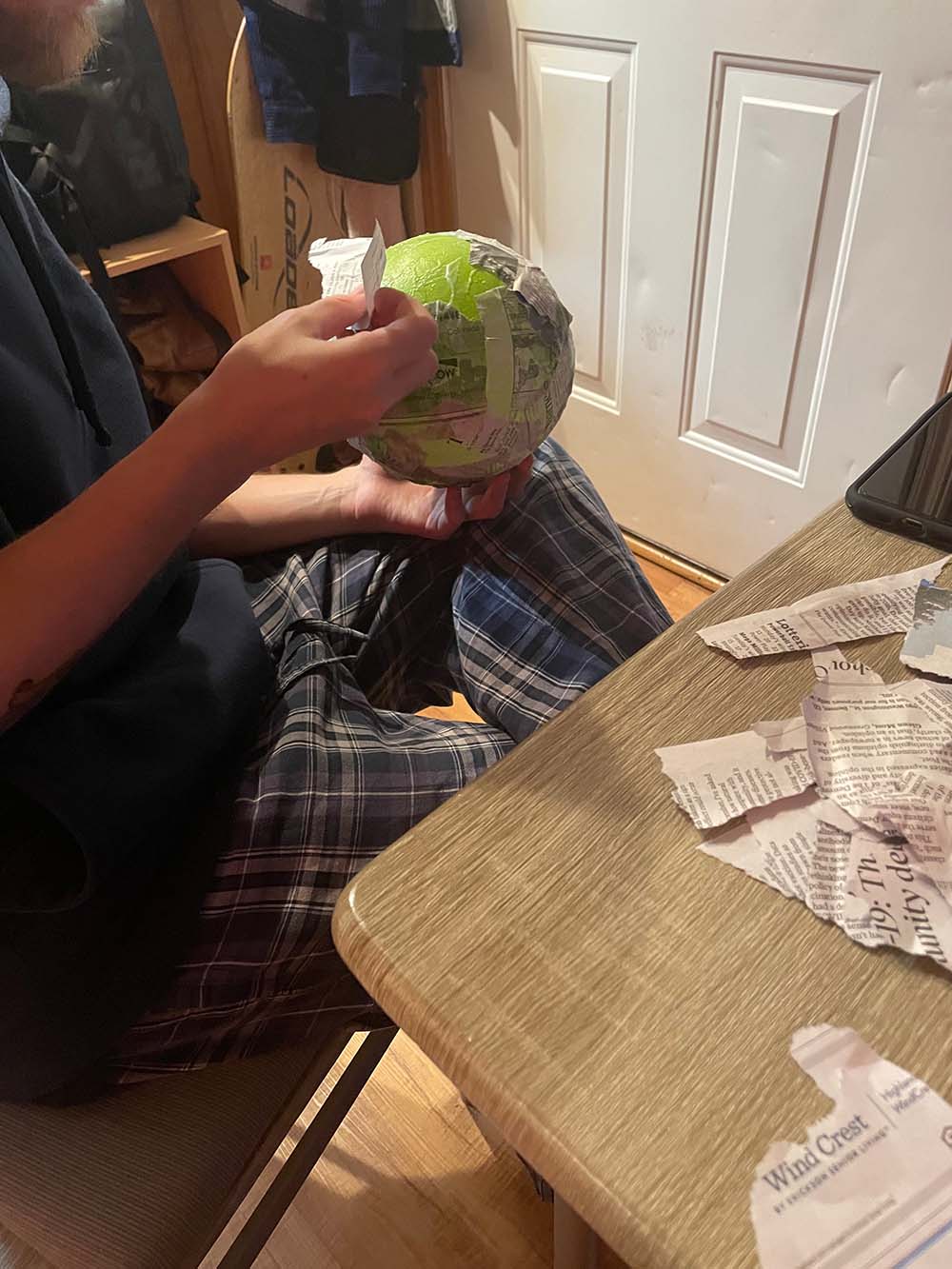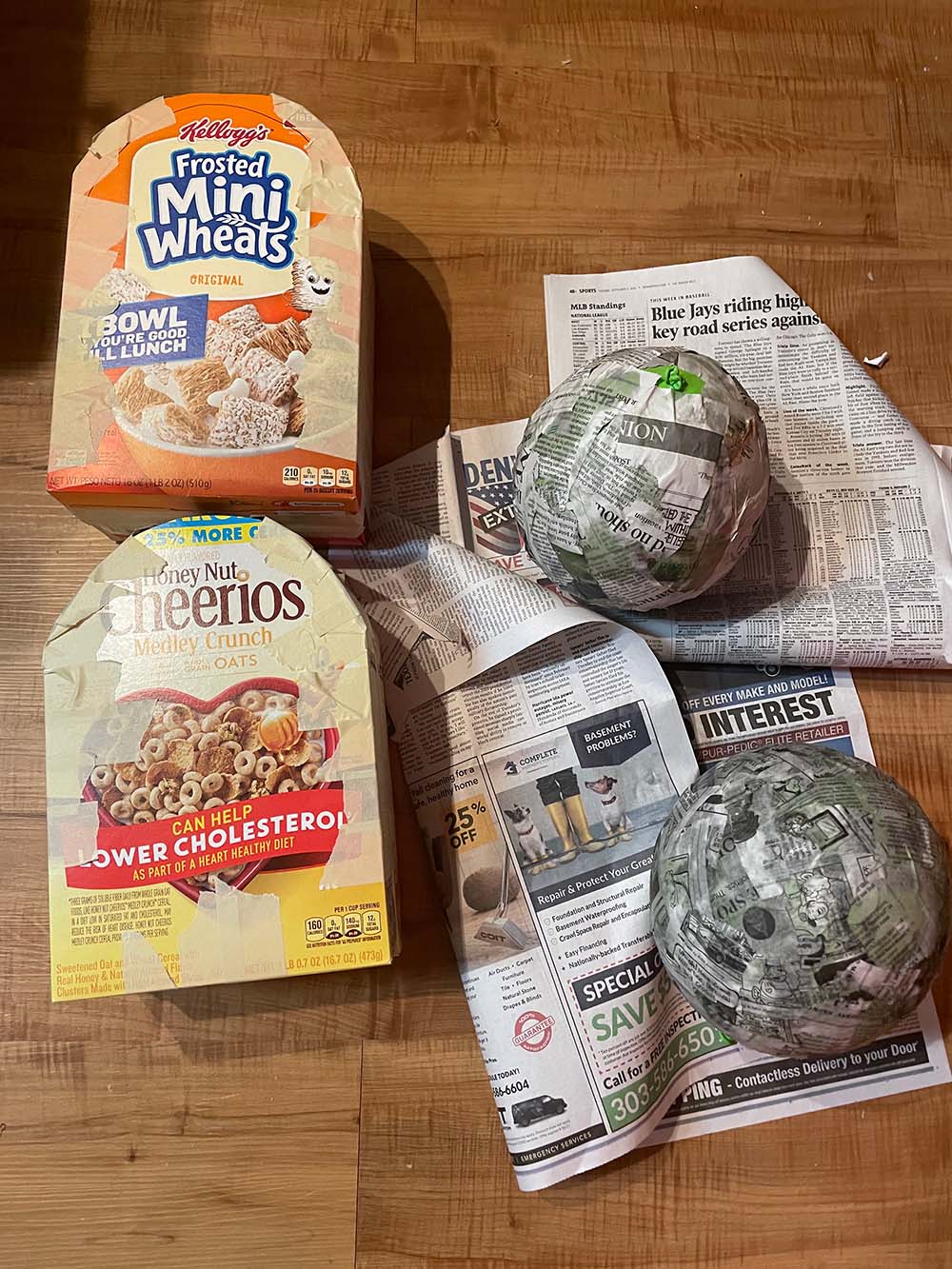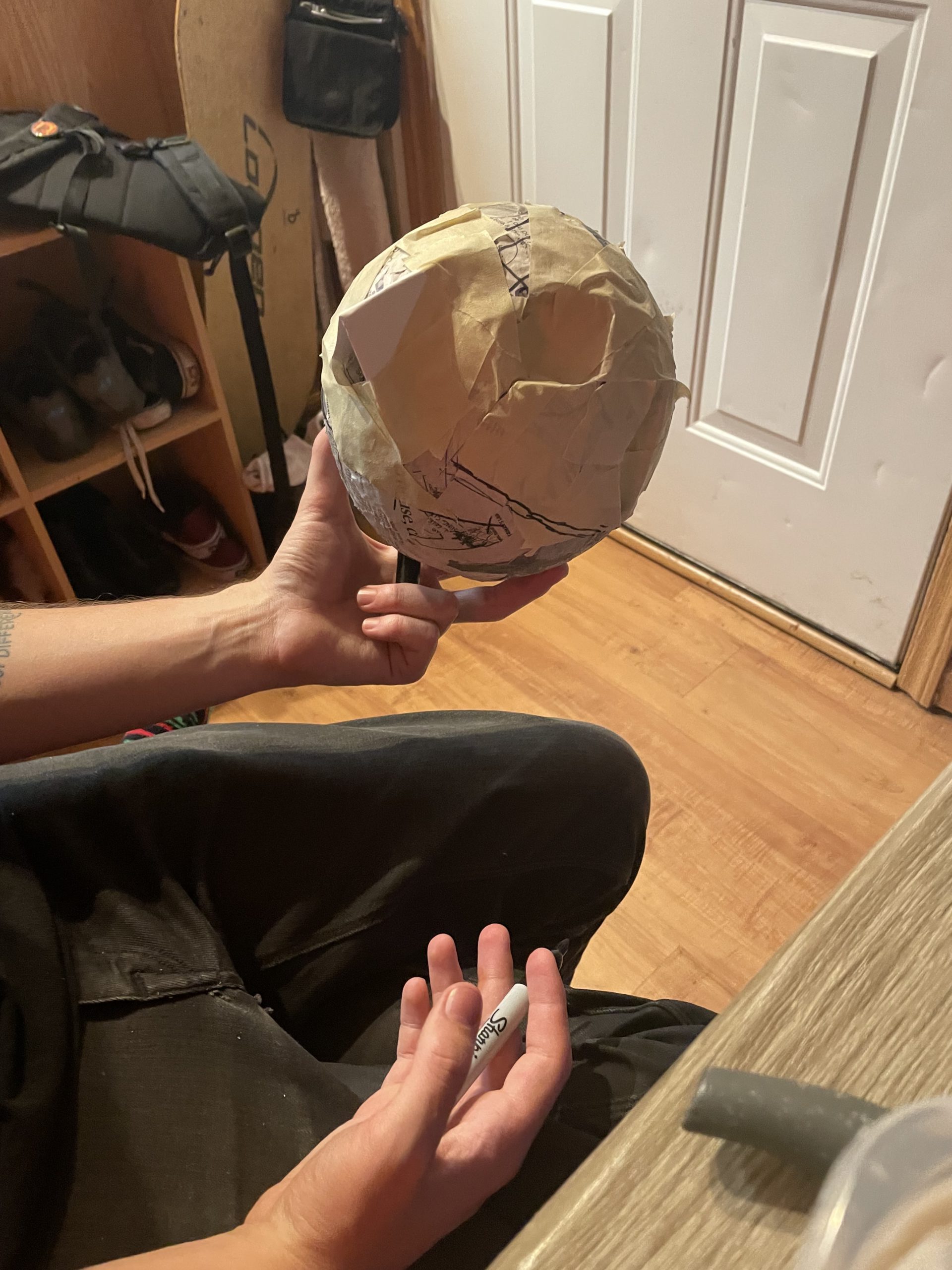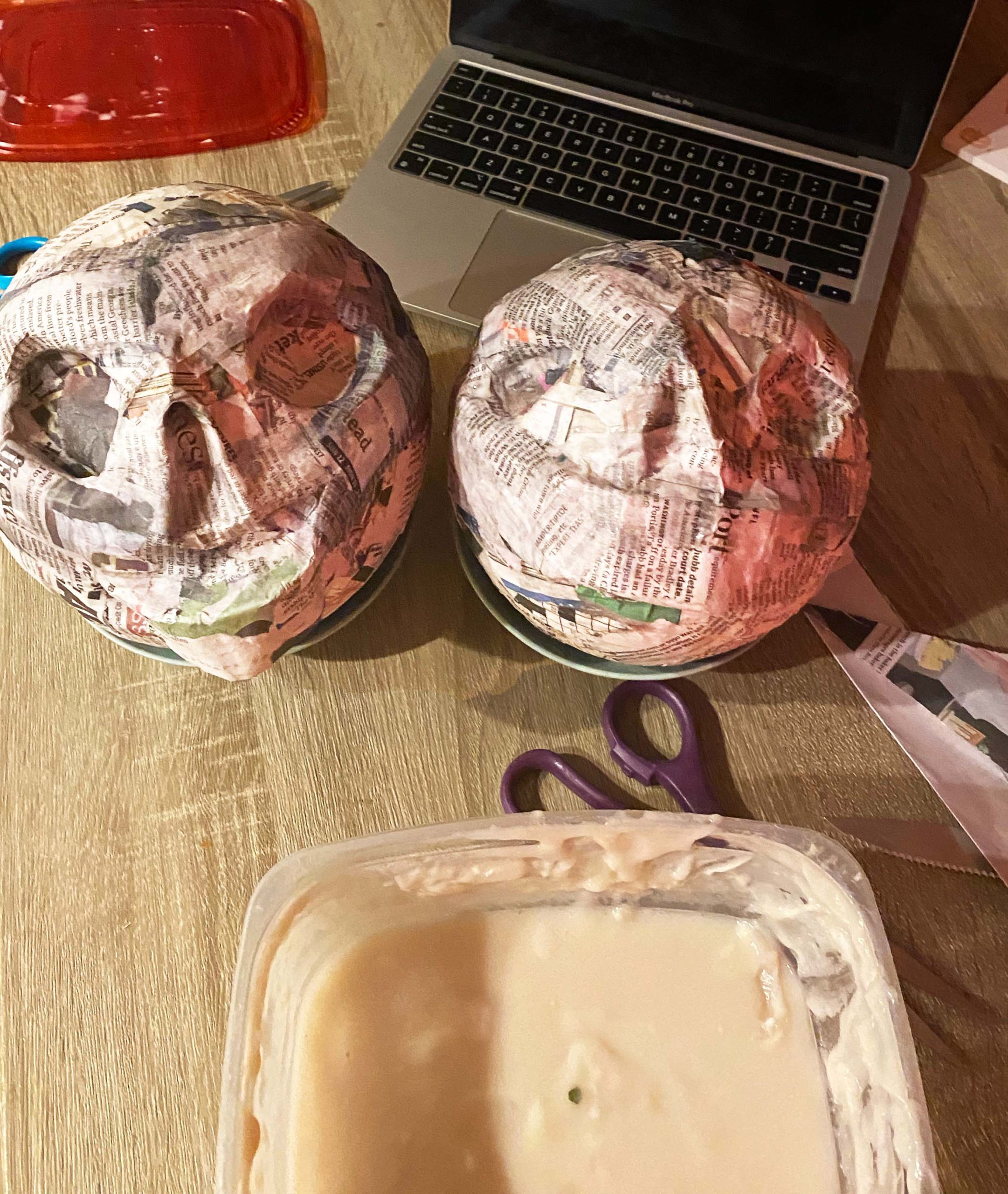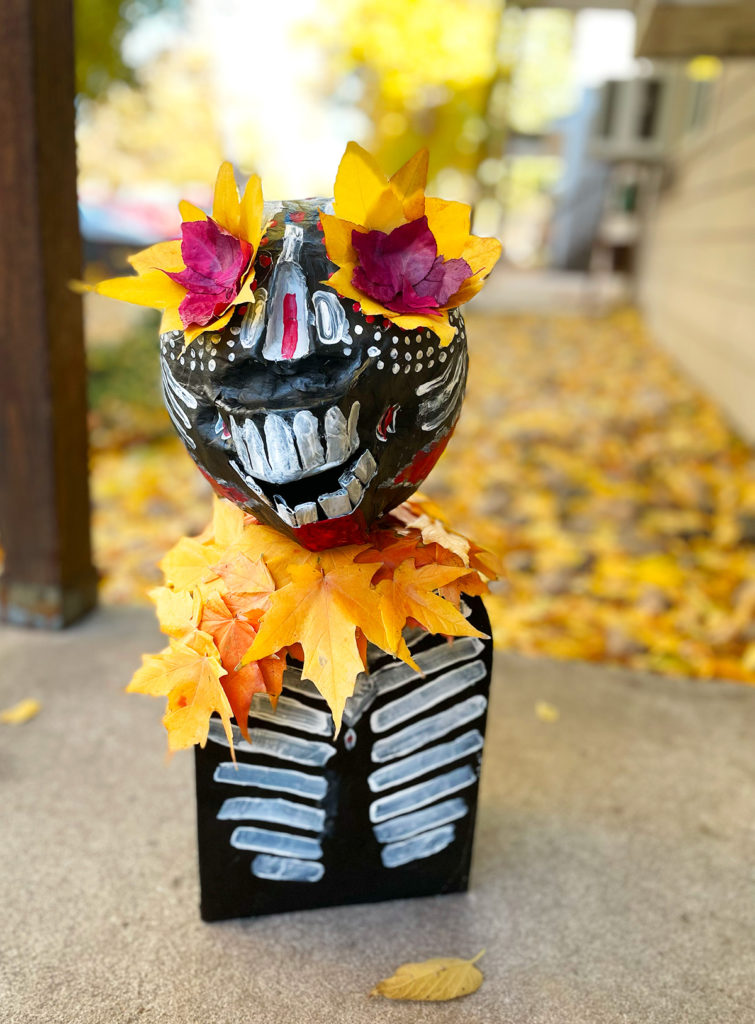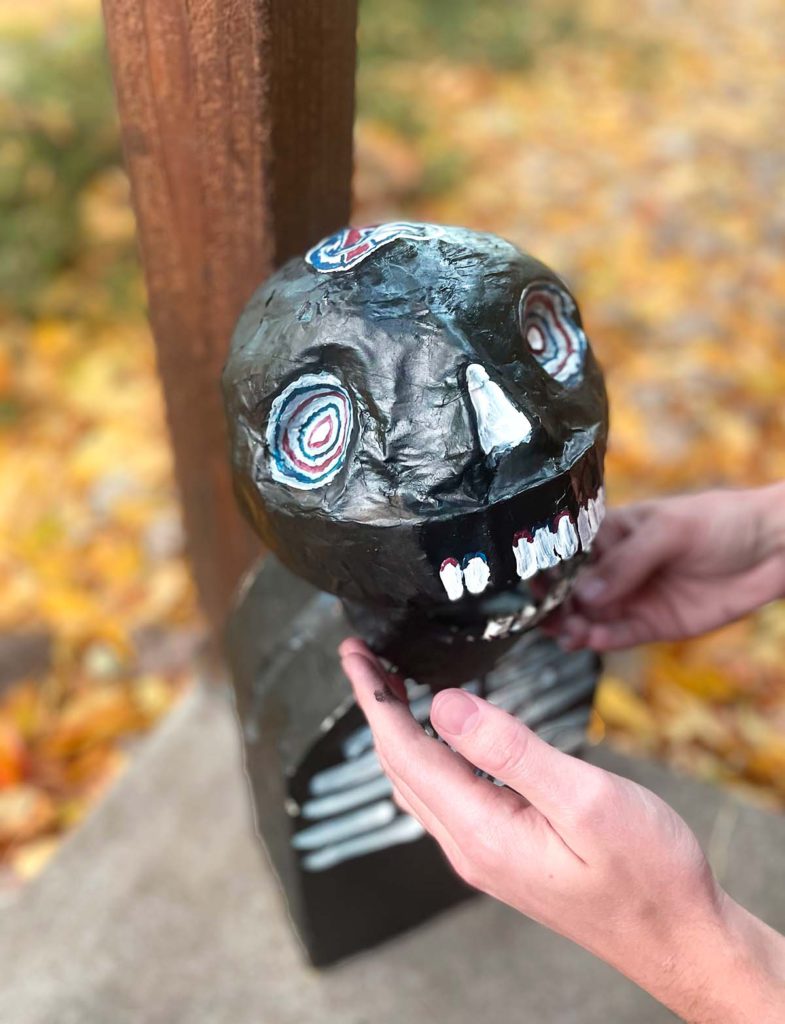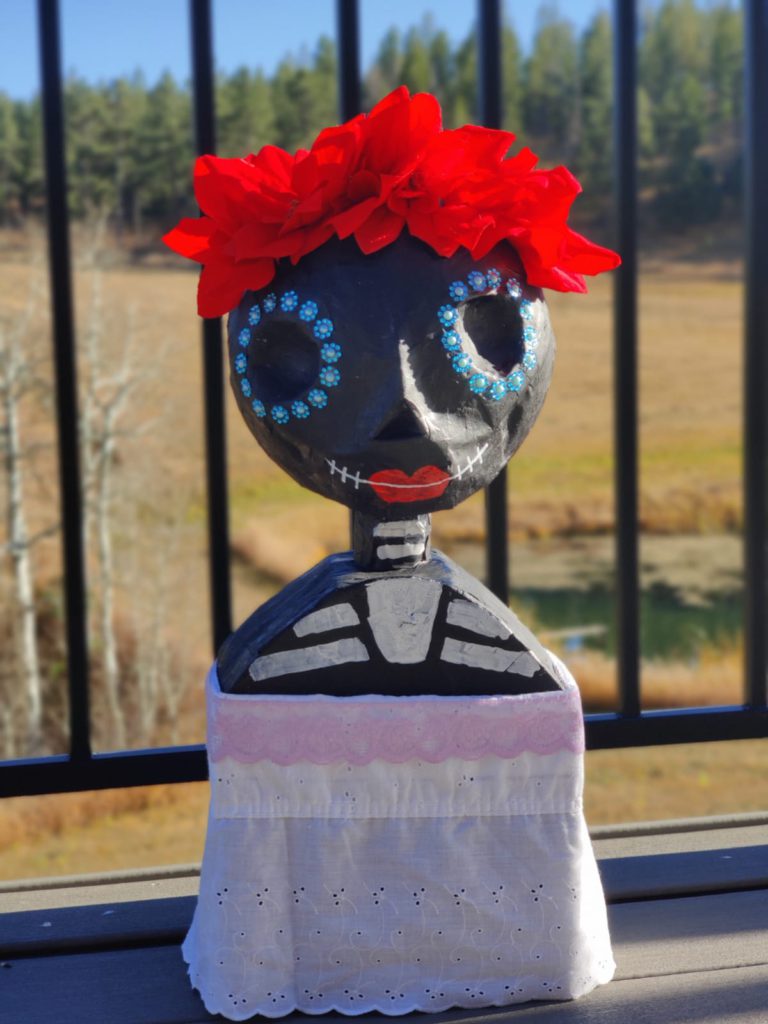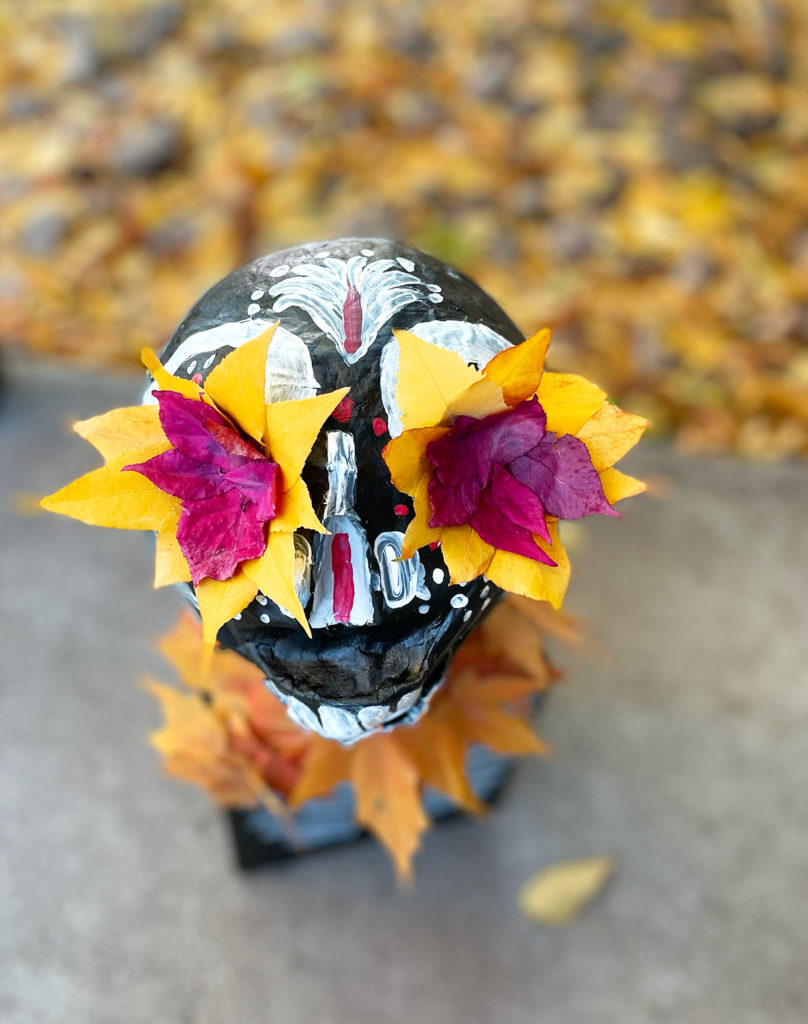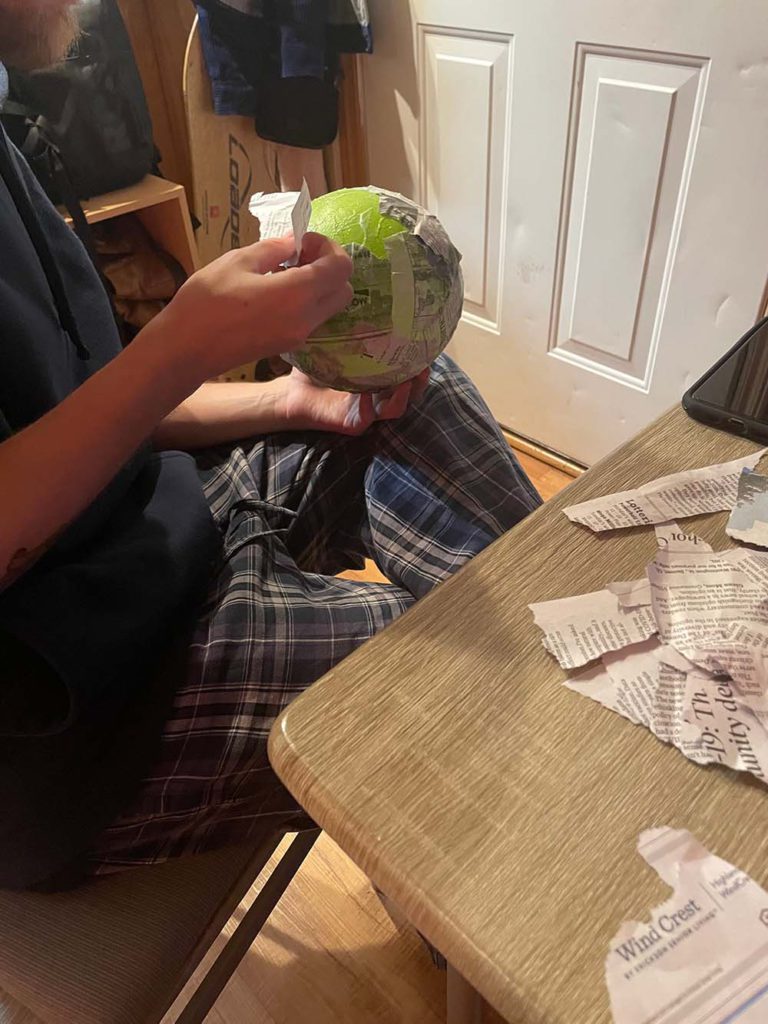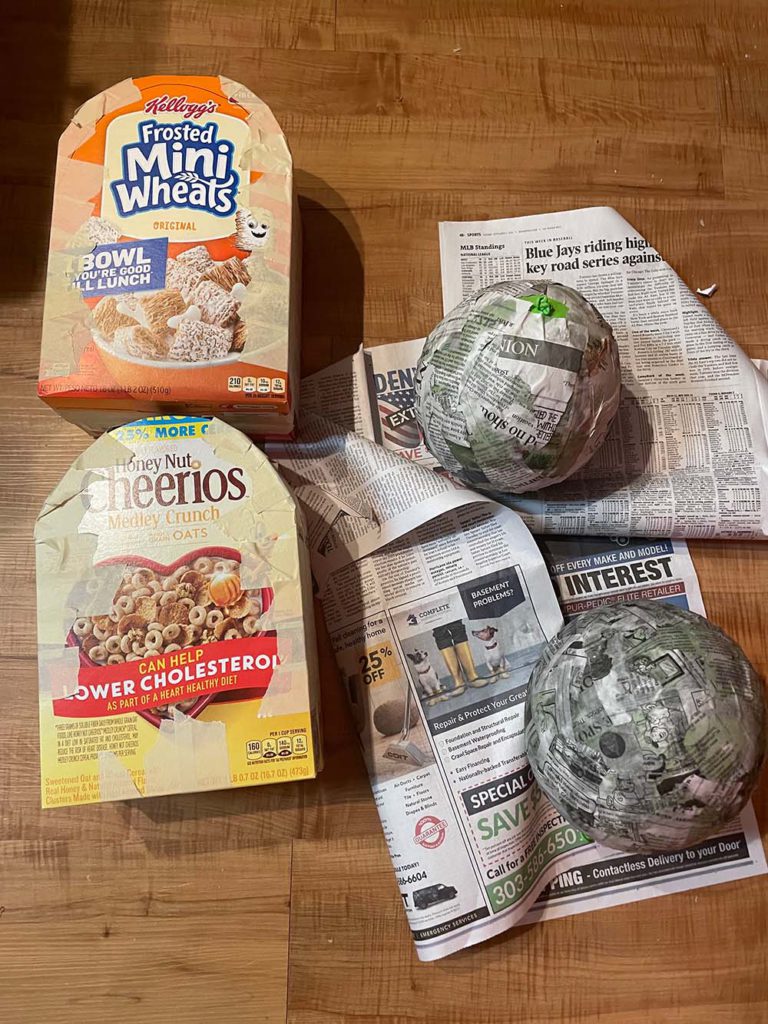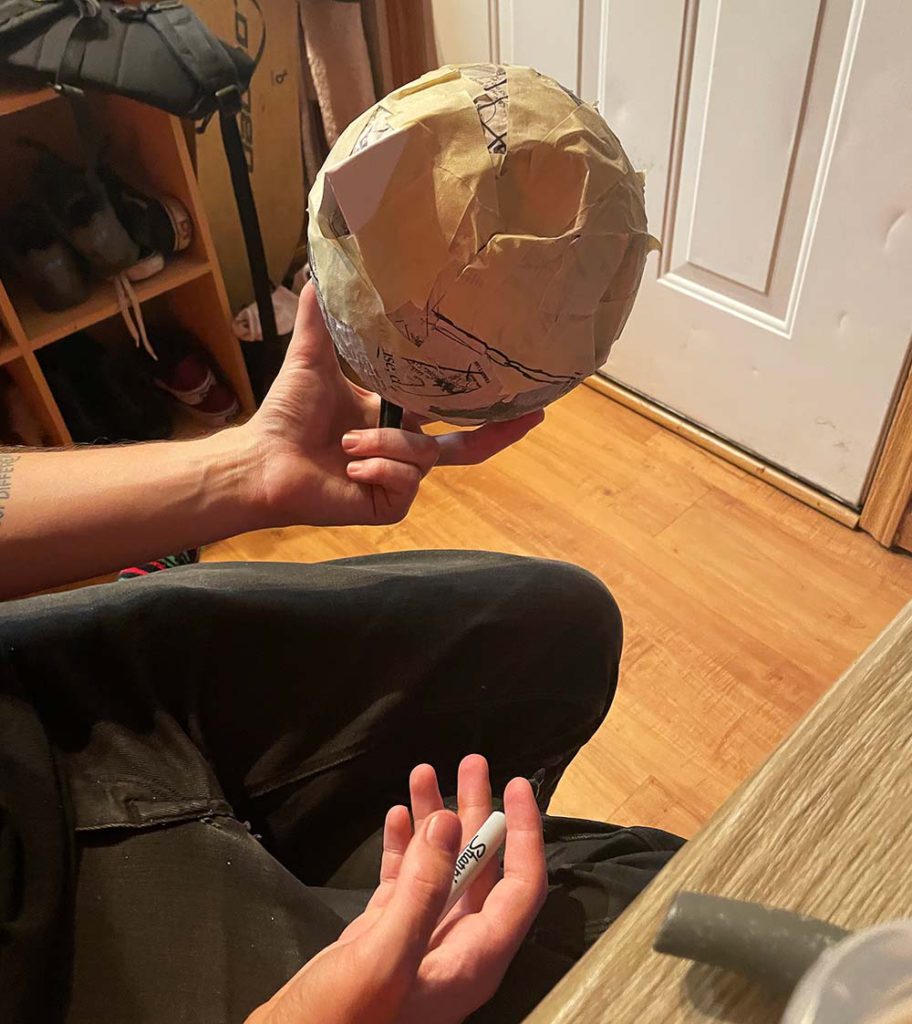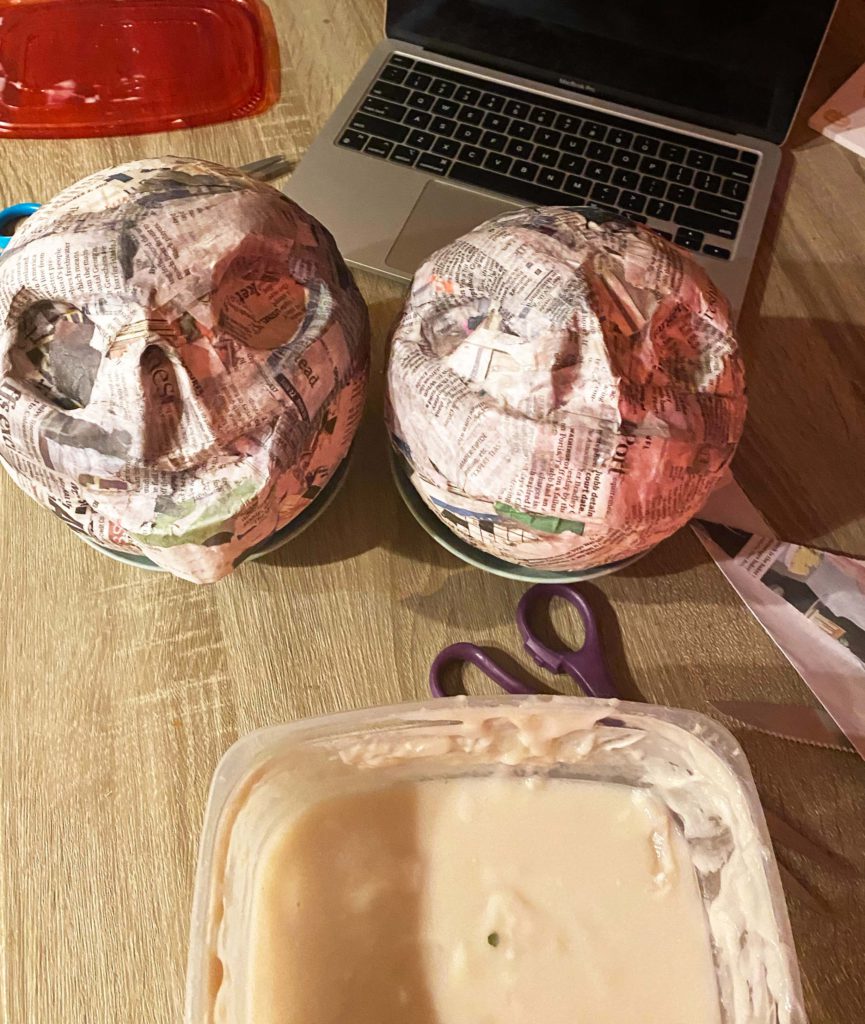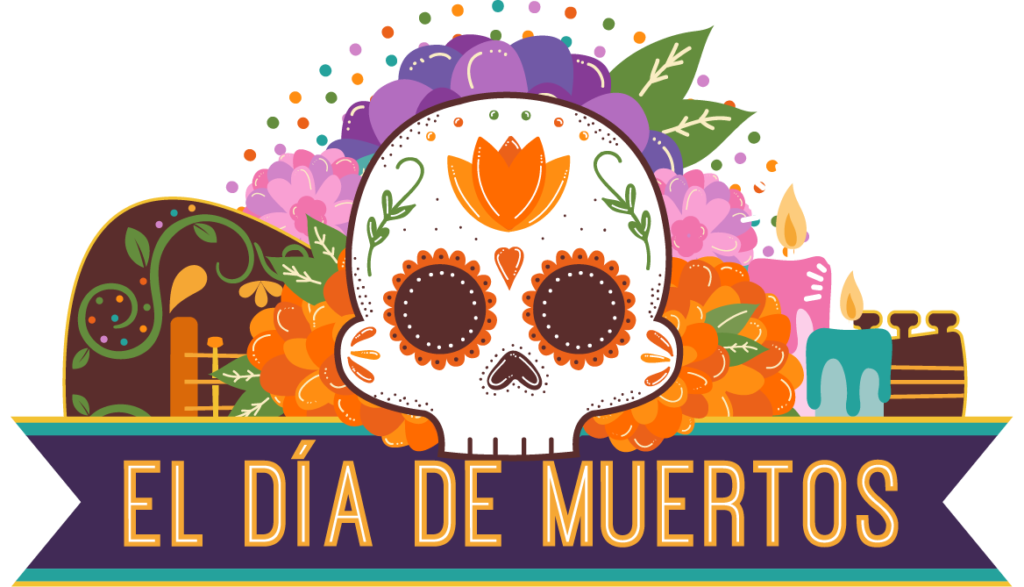Día de Muertos: Its History, Origin and Art
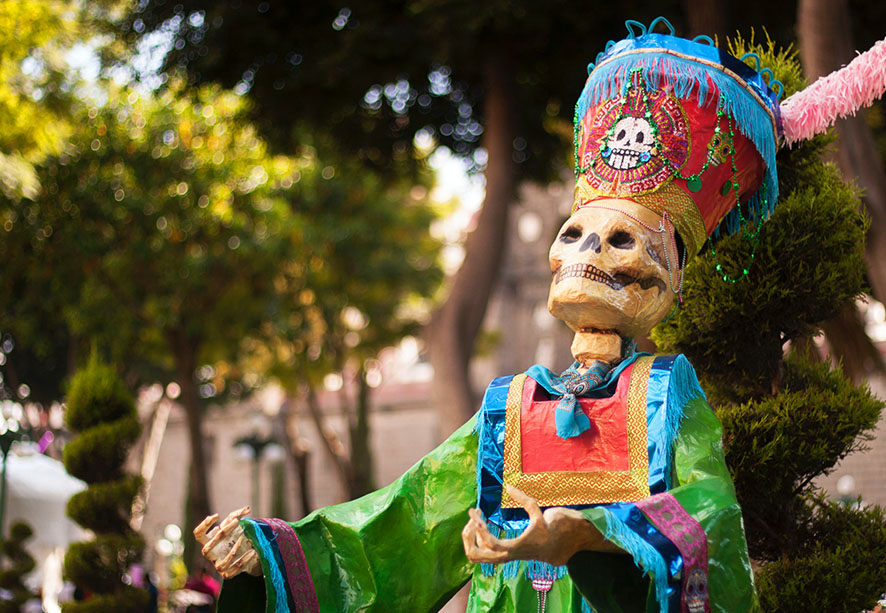
Cartonería for Día de Muertos
Death is trapped in an eternal dance with Life. The dance is defined by its time on center stage and its uncertainty; this dance is not a timed waltz but a random collection of steps, spins, dips, and twirls.
Sometimes the two dance for less than a day, other times they move across the dance floor for over a century. We never know when the dance will end – counting our precious days on Earth.
The annual Mexican and Latin American celebration of Día de Muertos recognizes this dance each year when family and community members gather to celebrate the life of deceased loved ones. Día de Muertos is celebrated internationally and millions of people gather to honor and celebrate the lives of their deceased loved ones. The holiday takes place November 1 and 2 each year.
The origins of the celebration are traced to Mesoamerican groups, such as the Aztecs and Mexica who previously held celebrations of their deceased loved ones in the summertime; following Spanish colonization, the timing of the celebration shifted to later in the year to correlate with “All Saint’s Eve.”
Today, Día de Muertos is a combination of Aztec and Judeo-Christian influence. This combination or “syncretism” exists because of the desire of the Indigenous people to preserve their important long-held practices in the face of undue transformation under colonization.
The Northern Colorado community, organizations, and Poudre Libraries have celebrated Día de Muertos for over a decade. Each annual celebration is planned with a concerted effort to organize an inclusive and authentic cultural celebration.
Celebrating Hispanic and Latinx Heritage Month with a Paper Mâché Master
As part of Hispanic and Latinx Heritage Month (October) leading up to Día de Muertos, the Library District also creates programming centered around Hispanic and Latinx culture. Programs are open to any community member.
That’s how I found myself firing up my Zoom App every Tuesday for the last five weeks, tuning into a creative cultural class by Poudre Libraries. Mexican artist Ana Patricia López Moreno Zoomed in from Puebla, Mexico where she runs an art school. She led a class of about 14 community members in making Mexican cartonería skulls, a type of Mexican art technique utilizing paper mâché.
This particular program (organized by the Community Outreach team) gave community members the opportunity to either engage in an art project intertwined with their own culture or, offered the chance for participants to learn more about Hispanic and Latinx culture through art and exposure. Moreno explained the instructions in Spanish while the translator seamlessly and simultaneously provided translation in English.
For this class, we used newspaper and traditional glue – a paste with impressive longevity (5+ weeks) made out of flour, water, sugar, and vinegar. Other items included tape, balloons (to shape the head), cereal boxes (to shape the body), and paints to decorate the final product.
I consider myself artistic, bound by the creative fostering of a mother who’s an elementary school teacher, though by no means am I a paper mâché expert. This became abundantly clear as Moreno led participants through step-by-step instructions to create a cartonería skull and accompanying body.
Moreno had us frantically tearing paper, dipping our fingers in glue, and keeping up with her in a way that somehow by the end of Session #2, we went from a balloon covered in ripped pieces of paper to a sphere that resembled a human skull.
By the end of Session #5, the conclusion of the workshop, we amicably called our teacher Patty and felt we had mastered the art of tearing the Denver Post Sports section into appropriately sized pieces.
Most importantly, we had produced two beautiful and radically different pieces representative of our own personal color palettes and artistic inclinations: mine was brightly colored with traditional decoration, my partner’s kept to a dark color scheme with a Colorado Avalanche Hockey Team tribute.
Community Connection
Throughout the workshop, Patty educated us on the craft of cartonería, its history, and its vital role in Mexican art and Día de Muertos. Cartonería is not limited to the creation of skulls for Día de Muertos but covers any object, animal, or extravagant display created in the medium.
In anticipation of Día de Muertos across Mexico, artists, creatives and other community members focus their energy on creating cartonería sculptures for altars. Individual Día de Muertos altars honor loved ones through complex displays compromised of items that carry deep meaning and symbolism.
As members of the Northern Colorado community, engaged in learning more about Hispanic and Latinx culture, we are incredibly grateful to have taken part in an educational program that enlightened us on elements of culture and an important celebration that has taken place for hundreds of years.
We are grateful for the willingness of others to share an art-form that is historically woven into Mexican culture and the celebration of Día de Muertos.
We are most grateful to community members, artists like Patricia Moreno, and programs at the Library that open doors to cultural education and foster community interconnectedness.
The Library’s Día de Muertos celebration will take place at the Gardens on Spring Creek on Saturday, November 6, 2021, from 3 – 5 PM. Learn more about Día de Muertos and the community celebrations at the Día De Muertos website.
Cultura, creación y celebración
Día de Muertos: historia, origen y arte
Traducido por África García

Cartonería for Día de Muertos
La muerte se encuentra atrapada en un baile eterno con la vida. Este baile se caracteriza por su protagonismo en el centro del escenario y su incertidumbre. Este baile no es un vals si no una colección de pasos, vueltas y giros al azar.
A veces bailan durante menos de un día y otras veces se mueven por la pista de baile durante más de un siglo. Y nunca sabemos cuándo terminará el baile, siempre contando nuestros días en la Tierra.
La celebración anual del Día de Muertos en México y Latinoamérica reconoce este baile y reúne a familias y miembros de la comunidad para celebrar la vida de nuestros seres amados que fallecieron. El Día de Muertos es una celebración internacional y millones de personas se reúnen para honrar y celebrar a aquellos que ya no están. Esta celebración ocurre el 1° y 2 de noviembre de cada año.
El origen de esta celebración se remonta a grupos mesoamericanos como los Aztecas y Mexicas que ya eran conocidos por celebrar a sus fallecidos en el verano. Con la colonización española esta celebración se retrasó hasta noviembre para hacerla coincidir con el Día de Todos los Santos.
Actualmente, el Día de Muertos es una combinación de influencias Aztecas y judeo-cristianas. Esta combinación o sincretismo existe por el deseo de los pueblos indígenas de preservar sus prácticas y tradiciones frente a la transformación forzada que llegó con la colonización.
La comunidad del norte de Colorado, diferentes organizaciones y las Bibliotecas Poudre han celebrado el Día de Muertos por más de una década. Cada año esta celebración cultural es intencionalmente planeada para ser inclusiva y auténtica.
Celebramos el mes de la herencia hispana y latina con una maestra de la cartonería mexicana
Como parte del mes de la herencia hispana y latina (15 septiembre – 15 octubre) y encaminándonos al Día de Muertos, la biblioteca crea programas centrados en la cultura hispana y latina donde todos los miembros de la comunidad son bienvenidos.
Así fue como terminé entrando a Zoom todos los martes de las últimas cinco semanas y asistiendo a una clase cultural y creativa ofrecida por las Bibliotecas Poudre. La artista mexicana Ana Patricia López Moreno facilitó este taller desde la ciudad de Puebla donde dirige una escuela de arte. Patricia guio a un grupo de aproximadamente 14 personas para hacer catrinas mediante la técnica de cartonería mexicana.
Para unos, este taller organizado por el Departamento de Servicios y Programas Comunitarios fue una oportunidad de participar en un proyecto artístico conectado con su cultura, para otros, fue una oportunidad para aprender acerca de la cultura hispana y latina a través del arte. Las instrucciones se daban en español y, al mismo tiempo, la intérprete las daba en inglés.
Utilizamos periódico y engrudo (pegamento hecho con harina, agua, azúcar y vinagre) así como cinta adhesiva, globos, cajas de cereal y diferentes pinturas para decorar la pieza final.
Me considero una persona artística, gracias a tener una mamá creativa que es maestra de educación primaria, pero definitivamente no soy una experta en la técnica de cartonería. Gracias a Patricia quien nos guio paso a paso, la técnica fue lo suficientemente fácil de entender para crear y decorar esta catrina.
Nuestra instructora nos tenía rasgando periódico sin cesar y “manchándonos” con engrudo para no perder el ritmo, de tal forma que al final de la segunda sesión, habíamos pasado de tener un globo cubierto de papel a algo que ya iba tomando forma de calavera.
Al final de la quinta y última sesión del taller ya nos conocíamos y nos llamábamos por nuestros nombres de pila y, gracias a Paty, éramos expertos en al arte de rasgar la sección de deportes del Denver Post en trozos de tamaño adecuado.
Pero lo más interesante es que mi pareja y yo habíamos creado dos hermosas y totalmente distintas piezas de arte, cada una representando a su creador y sus inclinaciones artísticas: la mía tenía colores vivos y decoraciones más tradicionales mientras que la de mi pareja era más oscura y con unas tonalidades que rendían tributo al equipo de hockey Colorado Avalanche.
Conexión con la comunidad
Paty nos educó durante todo el taller en la técnica de cartonería, su historia y el importante rol que desempeña en el arte mexicano y el Día de Muertos. La cartonería no se limita a la creación de catrinas, también se utiliza para realizar otros objetos y animales.
En preparación para el Día de Muertos, artistas, creadores y miembros de la comunidad centran su energía en crear esculturas de cartonería para sus altares. Estos altares honran a nuestros seres queridos con objetos que tienen profundo significado y simbolismo.
Como miembros de la comunidad del norte de Colorado, nos sentimos muy agradecidos de haber participado en un programa educativo que nos abrió las puertas a esta cultura y a una celebración tan importante que data a cientos de años.
También estamos agradecidos por la disposición con la que se comparte este tipo arte tan importante en la cultura mexicana y en la celebración del Día de Muertos.
Y sobre todo agradecemos a los miembros de la comunidad, artistas como Patricia Moreno y programas de la biblioteca que abren puertas a la educación cultural y fomentan la conexión entre culturas.
La celebración comunitaria del Día de Muertos tendrá lugar en los Jardines en Spring Creek el sábado 6 de noviembre de 2021 de 3:00 a 5:00 PM. Para aprender más sobre el Día de Muertos y la celebración comunitaria visite el sitio web del Día de Muertos.

